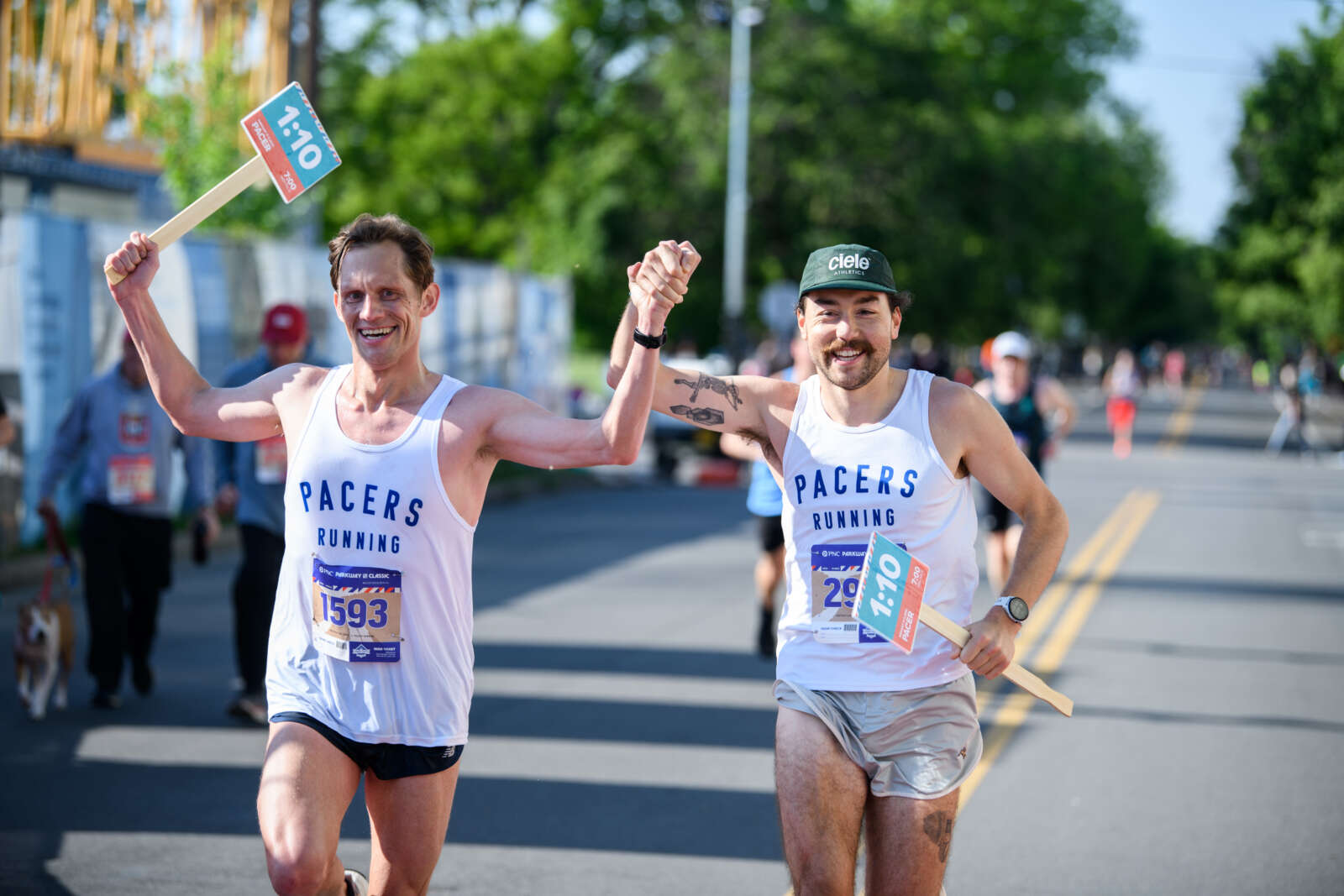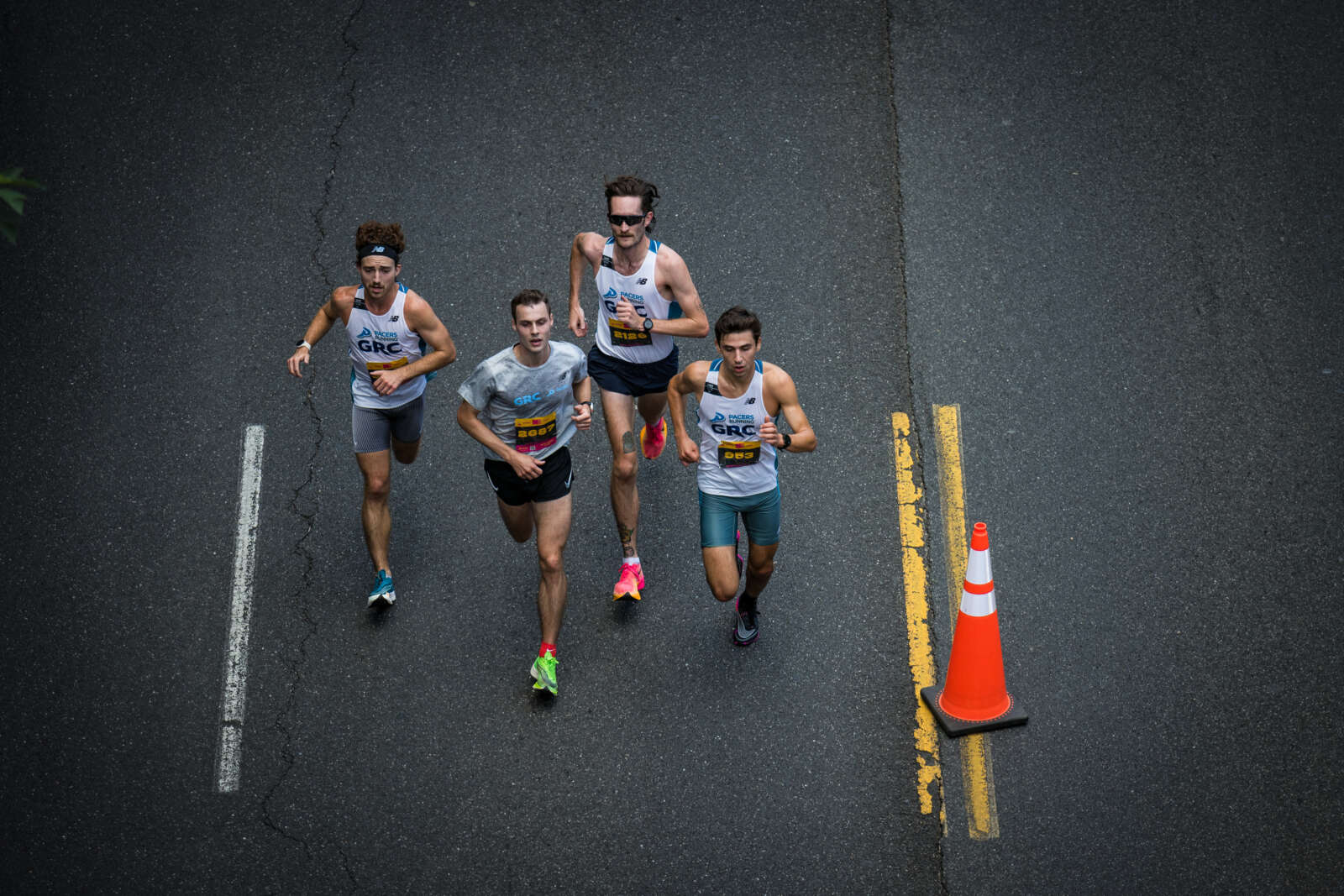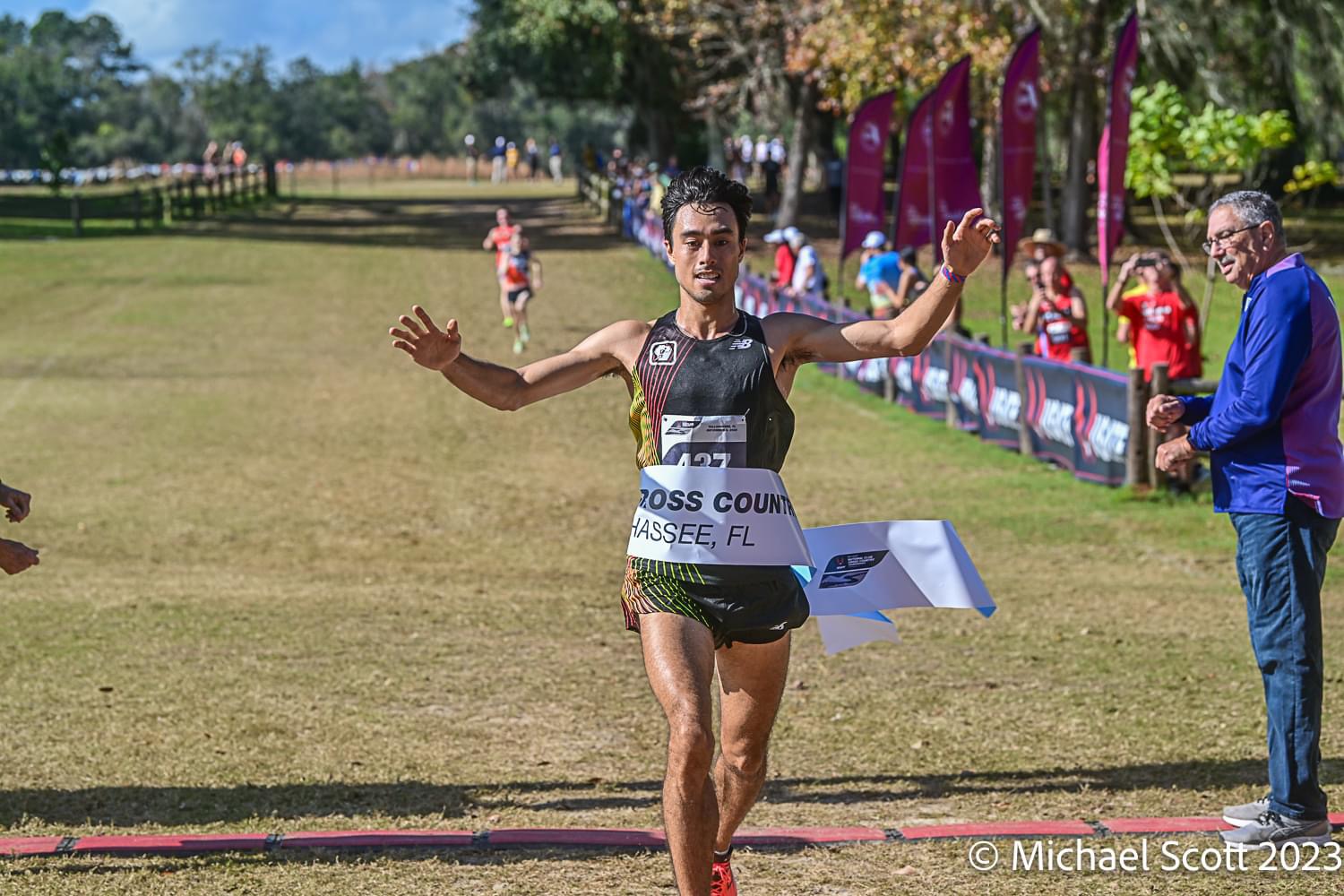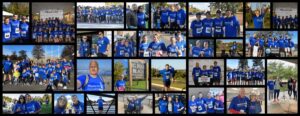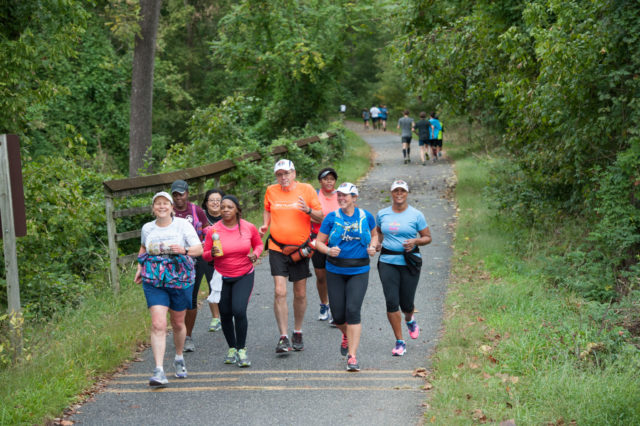
Most runners will never win a race. They’ll never make the front page of the results; they’ll never qualify for Boston. Sometimes they’re last, or close to it. But they run, and they keep showing up.
They’re “back-of-the-packers,” meaning simply, “whatever distance, or whatever race you’re running, you’re at the very end.” As the volume of runners has almost doubled over the past 10 years, the number of back-of-the-packers has followed. The increase in charity running, local running clubs, and surge in “X Weeks to a Marathon” training plans has fueled this growth.
While many people run their first race at the back of the pack and then eventually move up in the standings, some runners identify as lifetime back-of-the-packers. Bethesda’s Steve Ferguson is one, and he explains his “commitment” to slow running as an unintentional “reflection on my athletic ability…maybe I’ll be reincarnated as a fast runner.” Ferguson exemplifies that as a back-of-the-packer, “You can’t take yourself too seriously” and “you have to, by definition, have a good sense of humor.” He jokingly describes his race strategy as “the model of start out slow and fizzle out altogether.”
Benefits at the Back of the Pack
Ferguson, who runs five or six marathons per year plus a couple halves, had major heart surgery a few years ago and leads a group for the Montgomery County Road Runners. He’s a strong advocate of the back-of-the-pack approach to running.
“People are starting to realize that if you’re going to race competitively you only have a few years, but if you’re looking for something sustainable you can have for your whole lifetime,” he says.
He sees it as a “lifestyle thing” not a “competitive thing,” and points out that he has “nothing to worry about in the world, so I really don’t have to worry about where I finish in a race.”
Ferguson runs for the mental and physical benefits, and runs races for the camaraderie and sight-seeing.
“It’s fun, it’s social; you can actually talk to people,” he says.
He points out that seeing a city while slowly running is very different from what you might notice on a competitive run or when speeding by in a car. For Ferguson running is all about the experience — “90 percent of the population doesn’t get off the couch, so I figure as long as I’m getting out there I’m doing pretty well,” he says — and being a back-of-the-packer is just a necessary part of his experience. “It is what it is, so you have to enjoy the moment.”
Arlingtonian Ted Hobart has finished toward the back of the pack in 79 marathons.
“After the first time I came last place,” he says, “I was like, ok I’ve done that, now I can keep going.”
He echoes Ferguson’s points about the back-of-the-pack culture. “It’s a unique group and we have a great time,” he says. “It’s a lot of camaraderie and wonderful conversations.” Ted made it clear that when he says he’s at the back of the pack, he means “the waaaaaay back of the pack. Not four or five or six hours; we’re talking seven plus hours marathons.”
Every outing is a “race for survival,” he says. “You can’t let the sweeper pass you because if they do, you’re done. There’s no way you can catch up since you’re going so slow. You’d better know the route because directional signs may be taken down.”
He’s asks locals on the street what way the runners were going earlier to find the route — and he carries his own water and supplies because he never knows if aid stations will still be manned by the time he gets there.
Though most back-of-the-packers have a positive attitude about their experiences, there are challenges beyond logistics that they face. Valerie Silensky takes on running as a challenge “because no matter how much I do it I still suck at it.”
She runs races for the sense of accomplishment and community, but notes that “it can be really lonely and discouraging.” While people in the front and middle of the pack experience races full of cheering crowds and ample support, back-of-the-packers often have to stay motivated long after the crowds are gone and the volunteers have left their stations.
“Back of the pack, to me, means dedication,” she says. “It means not getting crowds, not getting a finish line, often not getting respect from fellow runners. But despite all that, we’re still out there doing it.”
However, she says that the D.C. area is uniquely supportive of slower runners. After racing all over the country, Silensky notes that most races here make you feel like you’re a part of the community regardless of your pace and make concessions enabling runners of all speeds to participate. “Just because we’re slow doesn’t mean we don’t have goals, we still want to PR,” she wants race directors and faster runners to know. “It matters to us and we’re doing our best too.”
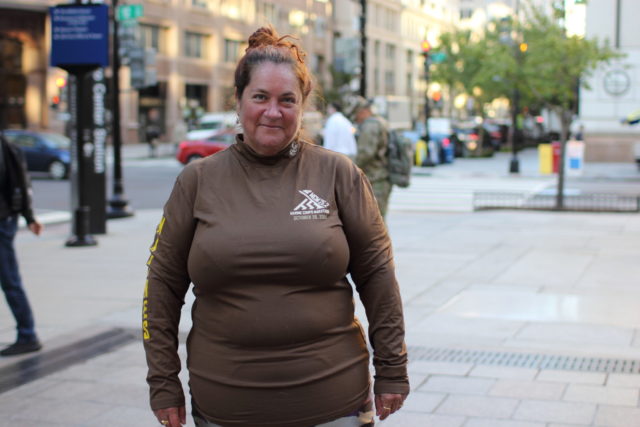
Preparing the Race for the Runners
Just as back-of-the-pack runners have to think about things that many other runners don’t, race directors must also consider back-of-the-packer needs as they plan logistics and coordinate volunteers for their races.
Local race organizer Jay Wind sympathizes with the needs of back-of-the-packers.
“Everyone deserves a chance to have their marathon,” he says.
To make this possible, he organizes multiple heats, thus allowing the 6-hour marathon people to start early and provide an opportunity for them to run and finish. He also secures two shifts of volunteers to make sure the course and aid stations are adequately covered while runners are still on the course.
As a sometimes-back-of-the-packer himself — one of his claims to fame was that he was recently on the very last page of the Boston Marathon results — Wind understands that group’s needs; however he is also pragmatic about the precautions that race directors must take. For example, especially at the back of the pack there might be health-related issues that might cause someone to be particularly vulnerable, so all volunteers must be trained in first aid. Additionally, coordinating communications between race directors and volunteers — and simply figuring out mid-race who is the last runner — is a constant challenge. He emphasizes the need for the runners themselves to be self aware.
“If someone starts in the wrong start, that means everyone has to wait for that person, since we can’t shut everything down until the last runner comes in,” he said. “I know what it’s like, but you have to start early enough so you don’t cause undue hardship on the aid stations and race organization.”
Wind has noticed significant growth in the back of the pack over the last few years, and advocates for the importance of race directors to be conscious of the unique needs of that group.
Hobart agrees, emphasizing the issue of posted finish time limits in the running world. Slow runners have to check the time limits in advance to ensure that they’re able to complete the race in the allotted interval.
“If a race advertises a certain amount of time, it’s critical to know if that time limit starts when a runner crosses the starting line, or when the gun goes off for elite runners,” Hobart says.
For example, he ran the San Francisco Marathon and it took over an hour just to get to the start line. Luckily in that instance the clock started ticking when he crossed the start line, but in many races that’s not the case, and that one-hour difference can be the make-or-break on whether a back-of-the-packer is allowed to finish a race.
Even when back-of-the-packers do finish a race, there is often not much left for them. “Races advertise free massages, food, Gatorade in the finish area,” Hobart says, “but in reality you may have 3,000 people in the race, and they gave all the bananas to the first 200 people.”
Hundreds of people were behind him when he ran the New York Marathon, but when he got to the finish area everything was being taken down. In contrast, he fondly recalls one race director in North Dakota who saved pizza for the last group of runners.
“That pretty much never happens, and after you’ve run a whole marathon someone saving pizza for you makes a huge difference.” He goes on, “Anyone who runs knows that it’s the little things that you really appreciate.”
Why do they do it?
Non-runners and speedy runners alike may wonder, why do they do it? “I do it for the fun, for the social elements, for health. Just doing it is enough!” Ferguson says. At one race, Hobart recalls elites—“people with natural talent”— saying I can’t imagine being out there for six hours! But he responds that he’s “thankful to have workable legs and a great heart and be able to go out and do these races.” People ask him all the time if he finds it gets easier the more he runs. “Maybe it does for some people,” he says, “but for me, nope, it never gets easier.”
Silensky notes that no matter how slow you are, there are both local and online running communities and Facebook groups that can become your teammates. She started running with Black Girls Run in DC, now runs with the November Project, and usually meets up with online teammates in starting corrals at races outside of this area. Even if they can’t run together in the race she appreciates the camaraderie and support.
“Some people feel like they can’t race and be accepted unless they’re a certain pace per mile,” she laments, “but [Black Girls Run] just want people out there moving forward and I love that.”
Though he’s not competitive in the traditional sense, Hobart appreciates the value of racing.
“Even if I’m feeling really awful, I start sprinting at the end. It’s not a fast sprint, but it feels great when I cross the finish line.”
He tells first-time marathoners: “when you get to the end, don’t look down at your watch and calculate your pace. When you cross the line put your hands up in the air and get that picture.”
This article originally appeared in the Winter 2016/2017 issue of RunWashington
Recent Stories
Looking for our race calendar? Click here Submit races here or shop local for running gear
James W. Foley Freedom Run
Inspired by the moral courage of freelance journalist James Foley, the mission of the nonprofit Foley Foundation is to secure the freedom of Americans held captive abroad unjustly by terrorist organizations or rogue states, and to promote journalist safety.
The
Kensington 8K Race
Since 1994, the Kensington 8K Race has been a favorite DC area fall race – a fun, fast event with beauty, challenge, and excitement. Run it this year on Saturday, September 21, 2024!
The 8K distance is $39, with a


